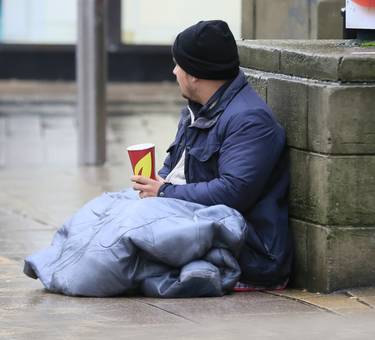CSMS Magazine
Homelessness is a major social justice issue that involves a large amount of communities across America. It impacts families living without shelters and basic needs. Homelessness is also an expensive expenditure effecting not just communities but also non-profit organizations and the health care system. According to the Official United Way website, “homeless persons are more likely to suffer chronic medical conditions and complications due to housing instability. Emergency rooms, crisis response, and public safety systems are utilized at much higher rate by homeless individuals.” (Way, 2019)
Homelessness on a macro level can also be cost worthy for it has become a major undertaking when it comes to finding adequate shelters for those without homes. According to a recent report from the Department of Housing and Urban Development (HUD), “homelessness fell steadily after 2010, but it ticked upward from 2016 to 2018. New York and Los Angeles each rose to surprising levels, enough to offset a decline in the rest of the country in the past few years.” (Development, 2019)
New York City’s homeless population has somewhat decreased because the city has magnified its efforts to combat such deplorable social conditions. The city has invested millions of dollars in order to convert hard-to-count people living on the streets into easier-to-count people in shelter programs. However, in Los Angeles, the homeless population is rising steadily. It reflects a noticeable emergency that should stress officials to consider drastic measures such as increasing funding for housing constructions for low-income families or stressing the emphasis on advocacy for allocation of equal basic resources.
The three main causes for homelessness in America are poverty, mental illness, and substance abuse. According to the Community Resources journal article, “From surveys of homeless individuals living on the streets and shelters, we have learned not only about the histories of homeless individuals but also about the neighborhoods where they lived prior to becoming homeless. One of the harsh realities is that homeless individuals and families tend to come from communities of concentrated poverty. These neighborhoods typically have the highest rates of unemployment, poor health, crime, family violence, low educational achievement and overcrowding.” (Haggerty, 2011)
Social justice, dignity and worth of the person, integrity, and competence are the ethical standards needed to tackle the homelessness epidemic in America. These principles stem from the National Association of Social Work code of ethics for practitioners in the social work field. Practitioners have a responsibility to apply these standards in order to better serve the homeless population on a direct macro level.
References
Development, D. o. (2019). Homelessness rates 2019. Washington D.C.: Department of Housing and Development .
Haggerty, R. (2011, 11 07). Getting to the Root Causes of Homelessness. Retrieved from Community Solutions: https://www.community.solutions/blog/getting-root-causes-homelessness
Way, U. (2019, January 01). Homelessness in Our Community Affects us all. Retrieved from United Way: https://www.unitedwaymcca.org/homelessness-our-community-affects-us-all
Note: Ashley Cummings is our new contributor. She lives and works in upstate New York.
Facebook: www.facebook.com/csmsmagazine
Follow us on Twitter: www.twitter.com/csmsmaga


